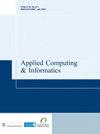利用大数据分析和物联网排放传感器进行NO2污染预测的boruta网格搜索最小二乘支持向量机
IF 4.9
Q1 COMPUTER SCIENCE, INFORMATION SYSTEMS
引用次数: 7
摘要
目的本文试图评估BA-GS-LSSVM与用于建立NO2预测模型的流行独立算法相比的性能水平。本文的目的是将来自物联网(IoT)传感器的相对较大的NO2数据与时间对应的天气和交通数据进行预处理,并使用这些数据使用BA-GS-LSSVM和流行的独立算法开发NO2预测模型,以便进行公平的比较。设计/方法/方法这项研究安装并使用了14个物联网排放传感器的数据,开发了NO2污染浓度的机器学习预测模型。作者使用大数据分析基础设施检索了5个多月来在数十秒内收集的大量数据。收集并合并了英国气象部门的天气数据和交通部的交通数据,以确定污染传感器所在的相应时间和位置。结果表明,混合BA-GS-LSSVM在NO2污染预测方面优于所有其他独立的机器学习预测模型。实际意义本文的混合模型为NO2污染物避免系统的知情决策提供了基础。独创性/价值这项研究安装并使用了14个物联网排放传感器的数据,开发了NO2污染浓度的机器学习预测模型。本文章由计算机程序翻译,如有差异,请以英文原文为准。
Boruta-grid-search least square support vector machine for NO2 pollution prediction using big data analytics and IoT emission sensors
PurposeThis paper seeks to assess the performance levels of BA-GS-LSSVM compared to popular standalone algorithms used to build NO2 prediction models. The purpose of this paper is to pre-process a relatively large data of NO2 from Internet of Thing (IoT) sensors with time-corresponding weather and traffic data and to use the data to develop NO2 prediction models using BA-GS-LSSVM and popular standalone algorithms to allow for a fair comparison.Design/methodology/approachThis research installed and used data from 14 IoT emission sensors to develop machine learning predictive models for NO2 pollution concentration. The authors used big data analytics infrastructure to retrieve the large volume of data collected in tens of seconds for over 5 months. Weather data from the UK meteorology department and traffic data from the department for transport were collected and merged for the corresponding time and location where the pollution sensors exist.FindingsThe results show that the hybrid BA-GS-LSSVM outperforms all other standalone machine learning predictive Model for NO2 pollution.Practical implicationsThis paper's hybrid model provides a basis for giving an informed decision on the NO2 pollutant avoidance system.Originality/valueThis research installed and used data from 14 IoT emission sensors to develop machine learning predictive models for NO2 pollution concentration.
求助全文
通过发布文献求助,成功后即可免费获取论文全文。
去求助
来源期刊

Applied Computing and Informatics
Computer Science-Information Systems
CiteScore
12.20
自引率
0.00%
发文量
0
审稿时长
39 weeks
期刊介绍:
Applied Computing and Informatics aims to be timely in disseminating leading-edge knowledge to researchers, practitioners and academics whose interest is in the latest developments in applied computing and information systems concepts, strategies, practices, tools and technologies. In particular, the journal encourages research studies that have significant contributions to make to the continuous development and improvement of IT practices in the Kingdom of Saudi Arabia and other countries. By doing so, the journal attempts to bridge the gap between the academic and industrial community, and therefore, welcomes theoretically grounded, methodologically sound research studies that address various IT-related problems and innovations of an applied nature. The journal will serve as a forum for practitioners, researchers, managers and IT policy makers to share their knowledge and experience in the design, development, implementation, management and evaluation of various IT applications. Contributions may deal with, but are not limited to: • Internet and E-Commerce Architecture, Infrastructure, Models, Deployment Strategies and Methodologies. • E-Business and E-Government Adoption. • Mobile Commerce and their Applications. • Applied Telecommunication Networks. • Software Engineering Approaches, Methodologies, Techniques, and Tools. • Applied Data Mining and Warehousing. • Information Strategic Planning and Recourse Management. • Applied Wireless Computing. • Enterprise Resource Planning Systems. • IT Education. • Societal, Cultural, and Ethical Issues of IT. • Policy, Legal and Global Issues of IT. • Enterprise Database Technology.
 求助内容:
求助内容: 应助结果提醒方式:
应助结果提醒方式:


